9 Desert Oddities to Explore While You're Visiting the Coachella Valley

| Sandi Hemmerlein
If your spring plans are taking you to the SoCal desert regions — whether you're catching the last remaining wildflowers at high elevations or you're donning your Coachella or Stagecoach "festival wear" for a weekend in Indio — why not switch up your itinerary by taking in some of the stranger sights that they have to offer?
From parallel worlds to mythical creatures, the dry desert expanses around Palm Springs and Joshua Tree are populated with art, architecture, and alien influences that'll leave you scratching your head — and maybe even begging for more.
Here are nine oddities worth a desert detour for a closer look — because no matter how odd they may seem, your eyes aren't deceiving you!
1. Krblin Jihn Kabin, Joshua Tree

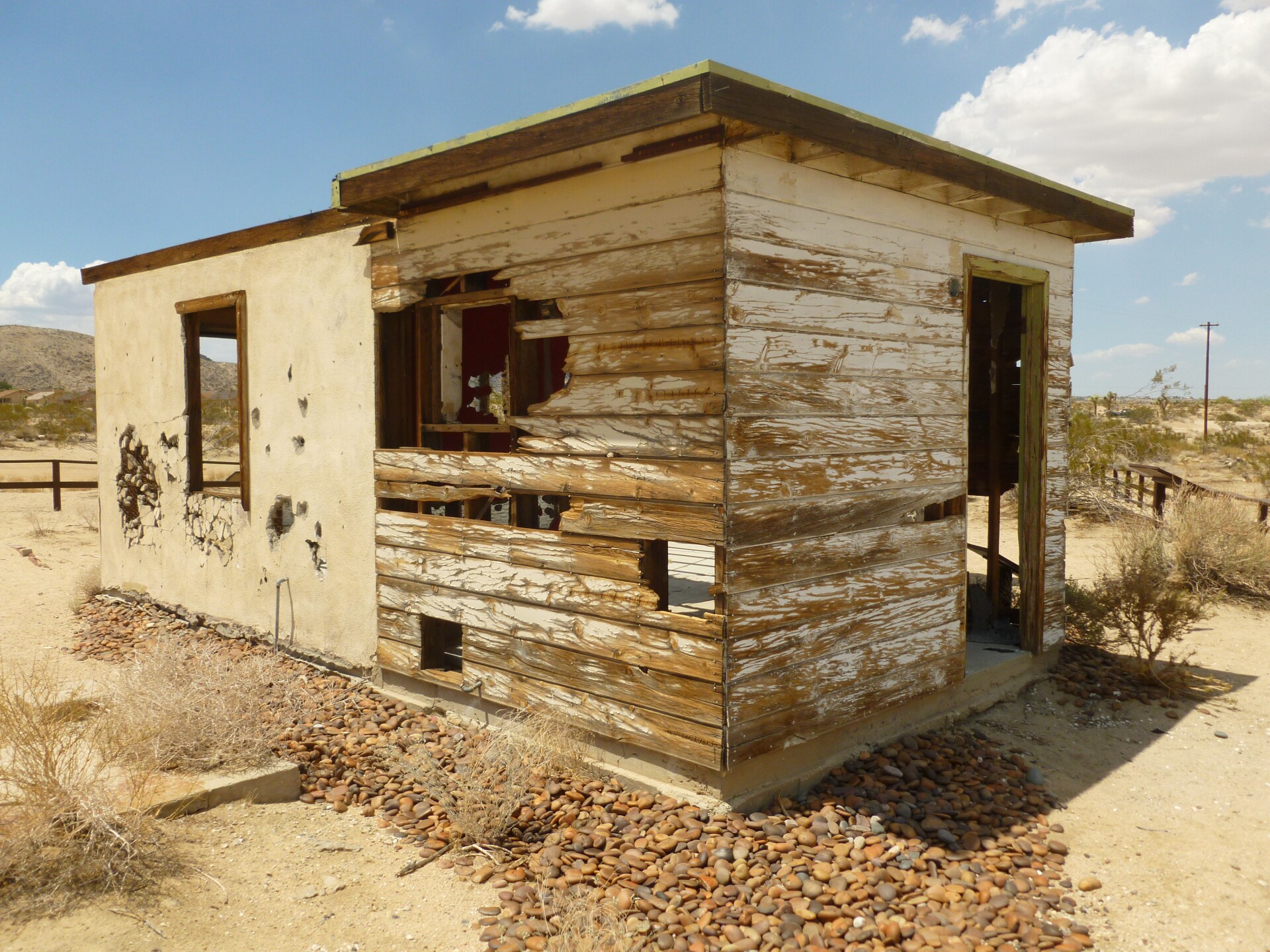




Welcome to the alternate universe known as Kcymaerxthaere (pronounced something like "chimeraxtheer" and rhymes with atmosphere) — a mythological civilization whose "historic sites" are being preserved and spotlighted by its "Geographer-at-Large," Eames Demetrios.
As the director of the Eames Office and Chairman of the Board for the Eames House — not to mention the grandson of Charles and Ray Eames — Demetrios is no stranger to art. But to him, the "historical sites" of Kcymaerxthaere are very real — in the sort of "anti-reality" of Kcymaerxthaere, anyway.
Krblin Jihn Kabin made its debut in Joshua Tree (part of the geographical area of Kymaerica) as part of the site-specific High Desert Test Sites program in 2004. It turns an otherwise anonymous jackrabbit homestead into a crumbling reminder of where the Jihn Wranglicans — a sect of Church of the California Christ, who followed "haumstedler" (homesteader) Krblin Jihn ("Brother John") — were imprisoned as heretics. Fortunately, the description on the interpretive signage was written in modern-day English (with all its c's and o's intact).
Approximate address: 5880 Border Avenue, Joshua Tree, CA 92252. Google Maps will get you there, but be sure to drive carefully on the dirt road.
2. The Glass Outhouse Art Gallery, Wonder Valley

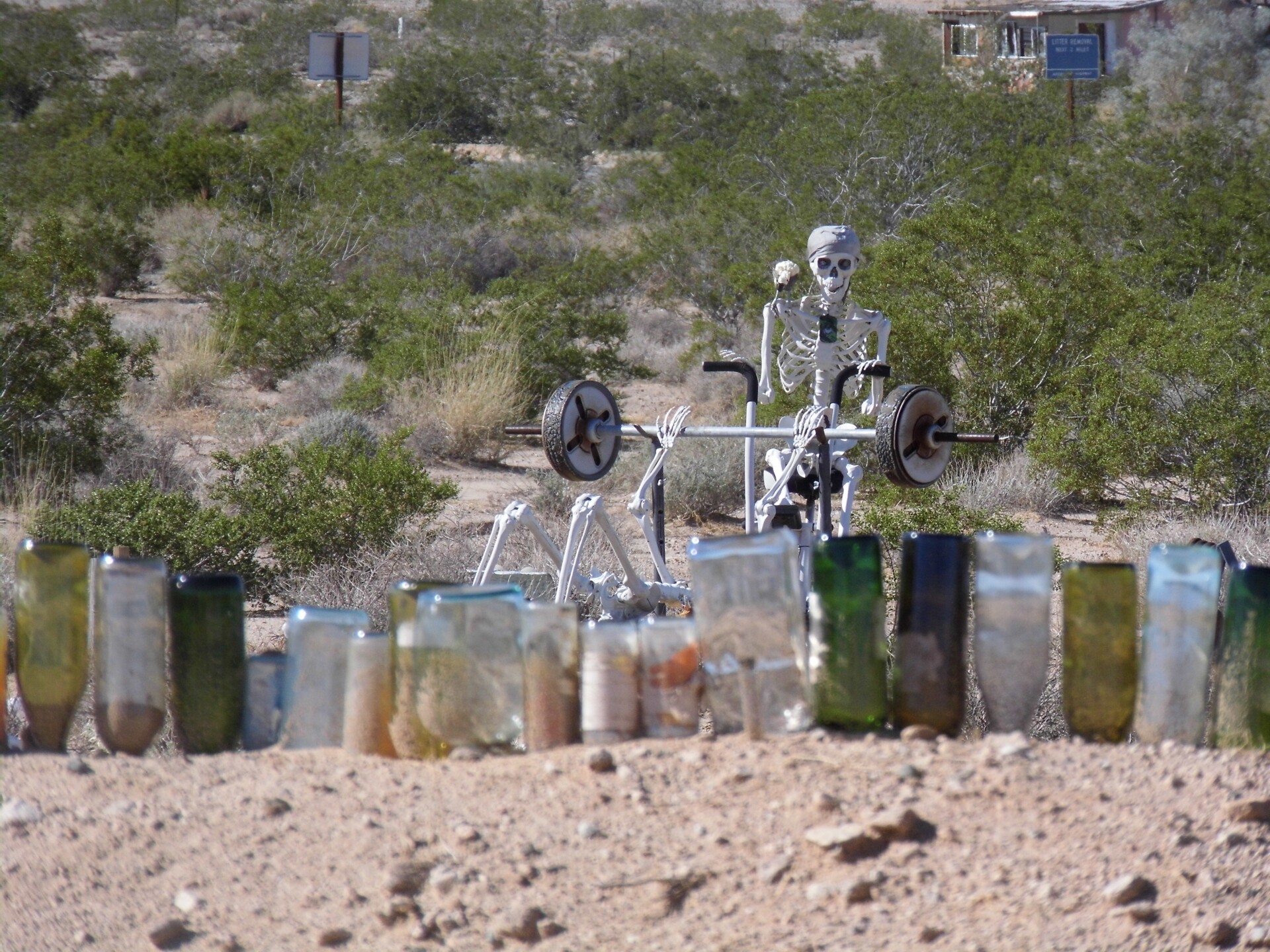
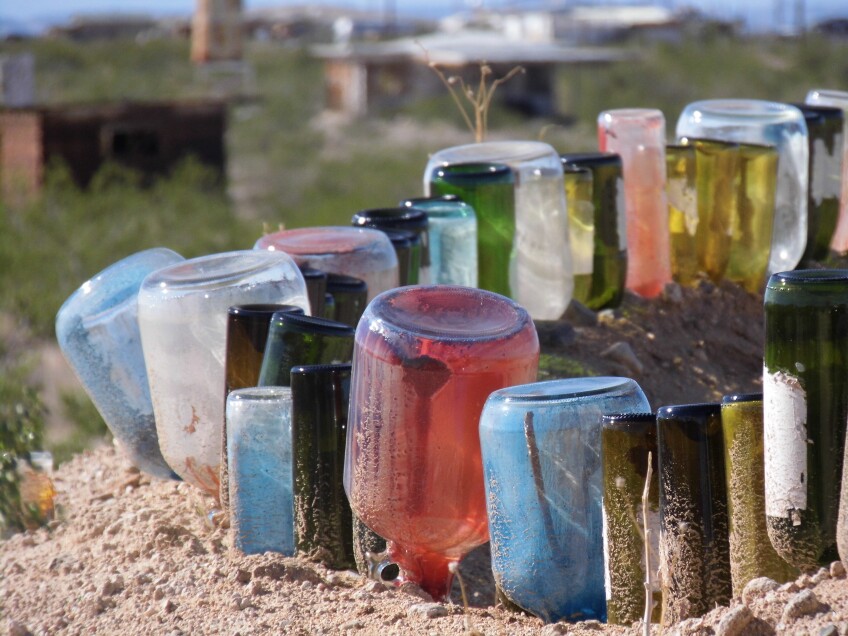

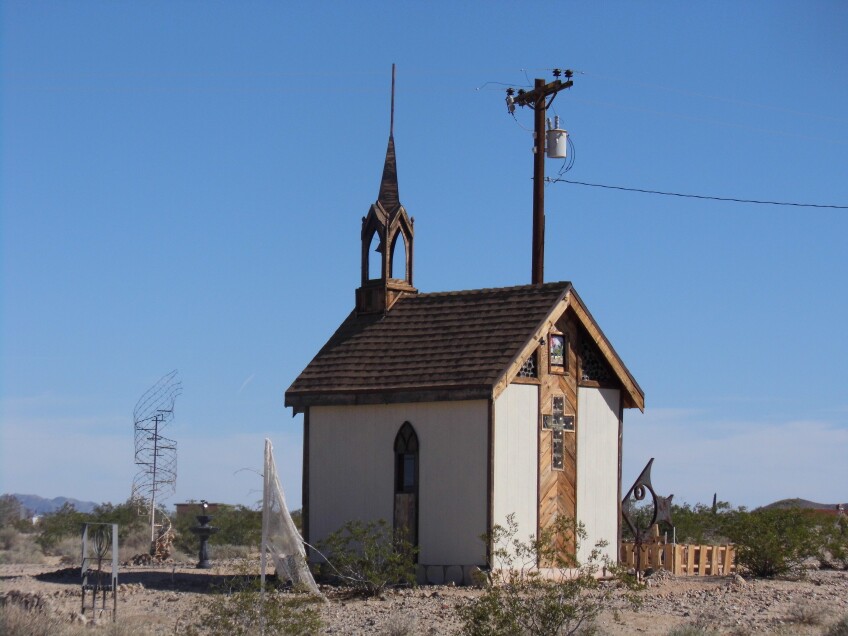

Located off Twentynine Palms Highway, less than five miles east of the Twentynine Palms entrance to Joshua Tree National Park, you'll find The Glass Outhouse Art Gallery. The site used to be a rabbit farm — later converted into a pistol range and gunsmithing shop — but in 2009, its owner Laurel Siedl turned it into a not-for-profit art space to showcase her own paintings and the oddball work of her friends. The gallery gets its name from its only restroom (which is actually mirrored).
Over the last 13 years, it's become a destination for any artist who didn't fit in the traditional "desert landscape" category of more mainstream galleries. And for art lovers, it's the perfect place to get lost in the whimsical and wild otherworldliness of the desert. Among the metal animals (including a Volkswagen "turtle"), a 4200-gallon Pepsi can, and a chapel that seems to have dropped out of the sky into the middle of nowhere, look for some surprise residents of "Ghouls' Gym" (who may have just laid out in the sun for a little too long).






Check the Facebook page for announcements of art openings (including in some interior gallery spaces, in the old rabbit barn), car shows, live music, and more. Or just show up anytime during open hours to walk the 2 acres of pathways that wind through the grounds.
Address: 77575 Highway 62, Twentynine Palms, CA 92277. Open Tuesday through Sunday, 1 to 5 p.m. Free admission.
3. The Integratron and Giant Rock, Landers

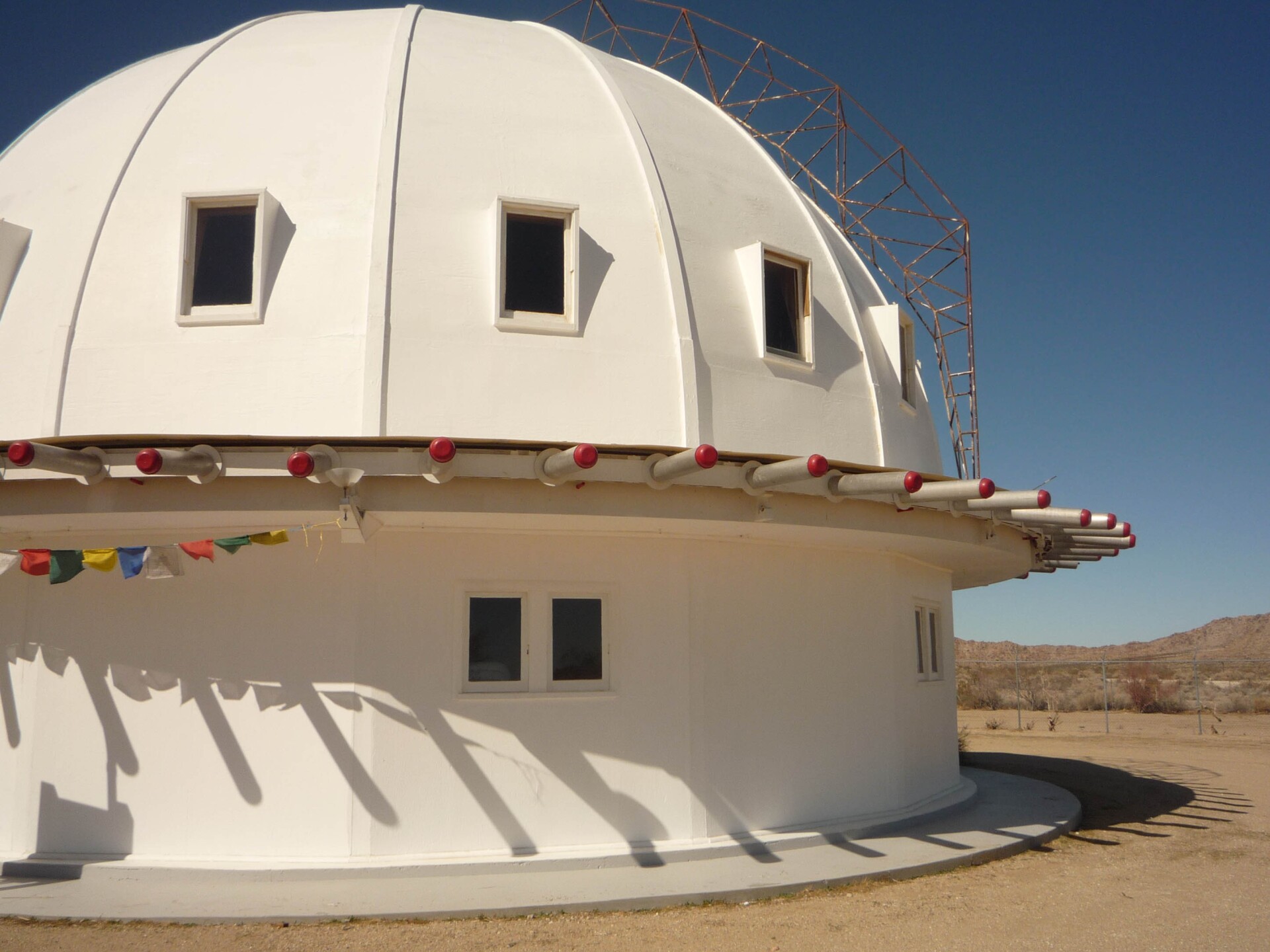
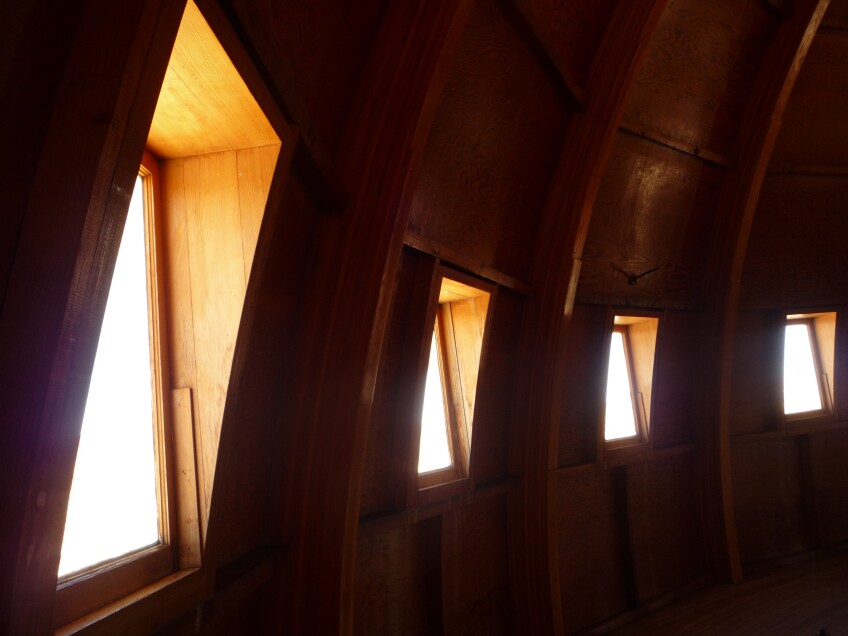





For an "out of this world" experience, take in a sound bath in the acoustically-perfect, wooden, sacred dome building known as the Integratron — the creation of inventor George Van Tassel, who also happened to be an aviator, former Douglas Aircraft engineer, and UFO conspiracy theorist.
Legend has it that during a "close encounter" at the 25,000-ton Giant Rock (still accessible on BLM-managed land by driving three miles from the Integratron on a dirt road), an extraterrestrial gave Van Tassel instructions of how to design and build this structure as an "electrostatic generator for the purpose of rejuvenation and time travel." Influenced by the theories of sacred geometry, Van Tassel created the Integratron at the confluence of five underground rivers — a vortex that's reportedly a locus of high geophysical and electromagnetic energy. The domed roof used to spin and create its own lightning (but alas, no longer does).
During one of the public or private sound baths, the sound of pure crystal bowls being played "washes" over you as you lie on the floor — and reportedly helps "recharge your battery" by energizing your chakras (though it doesn't seem to regenerate tissue the way it was intended to). Be sure to arrive early and hang around afterwards to view the historical photos and archival documents on display.
Address: 2477 Belfield Boulevard, Landers, CA 92285. Sound baths by advance reservation only.
4. Cabazon Dinosaurs, Cabazon

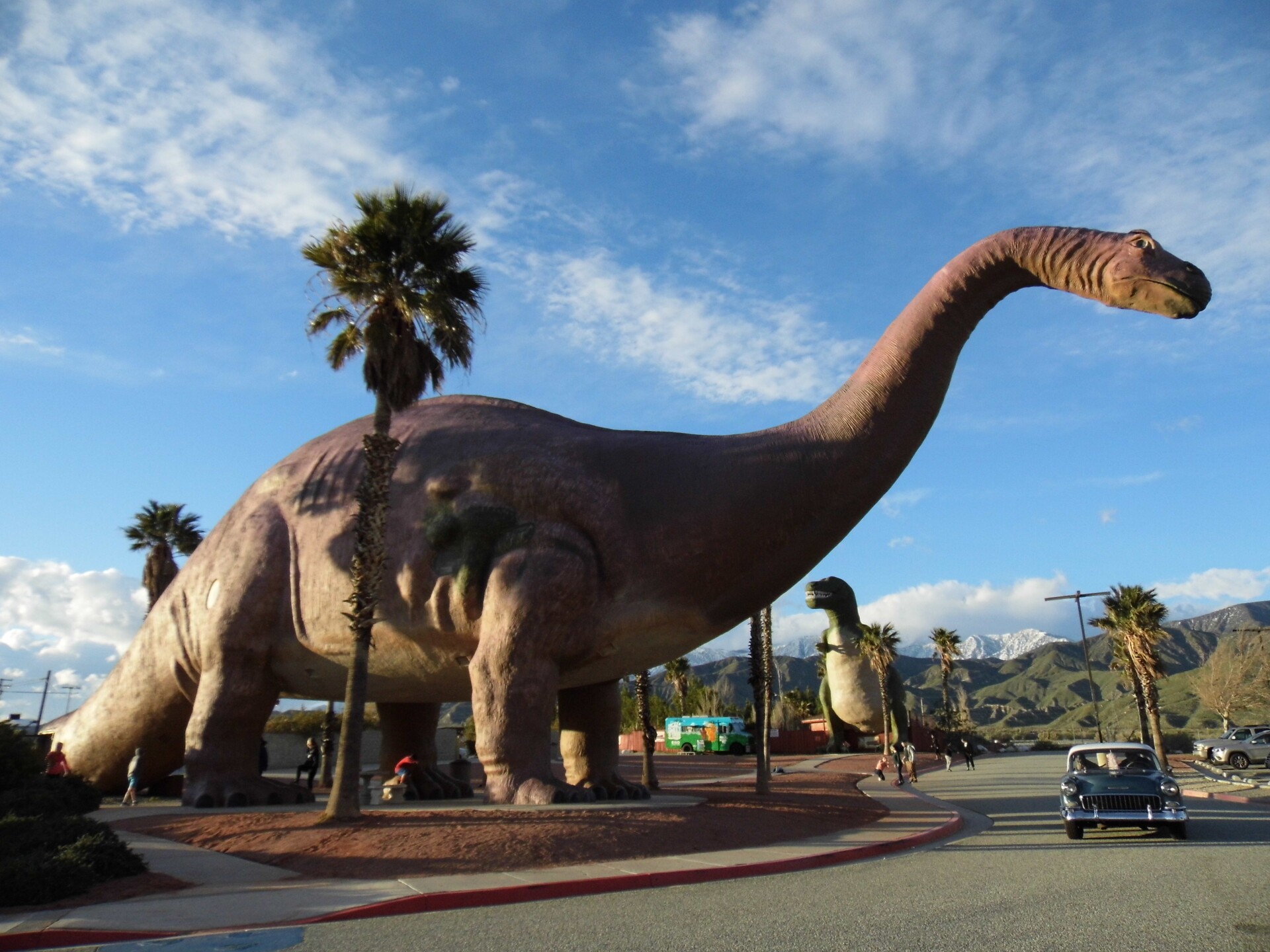



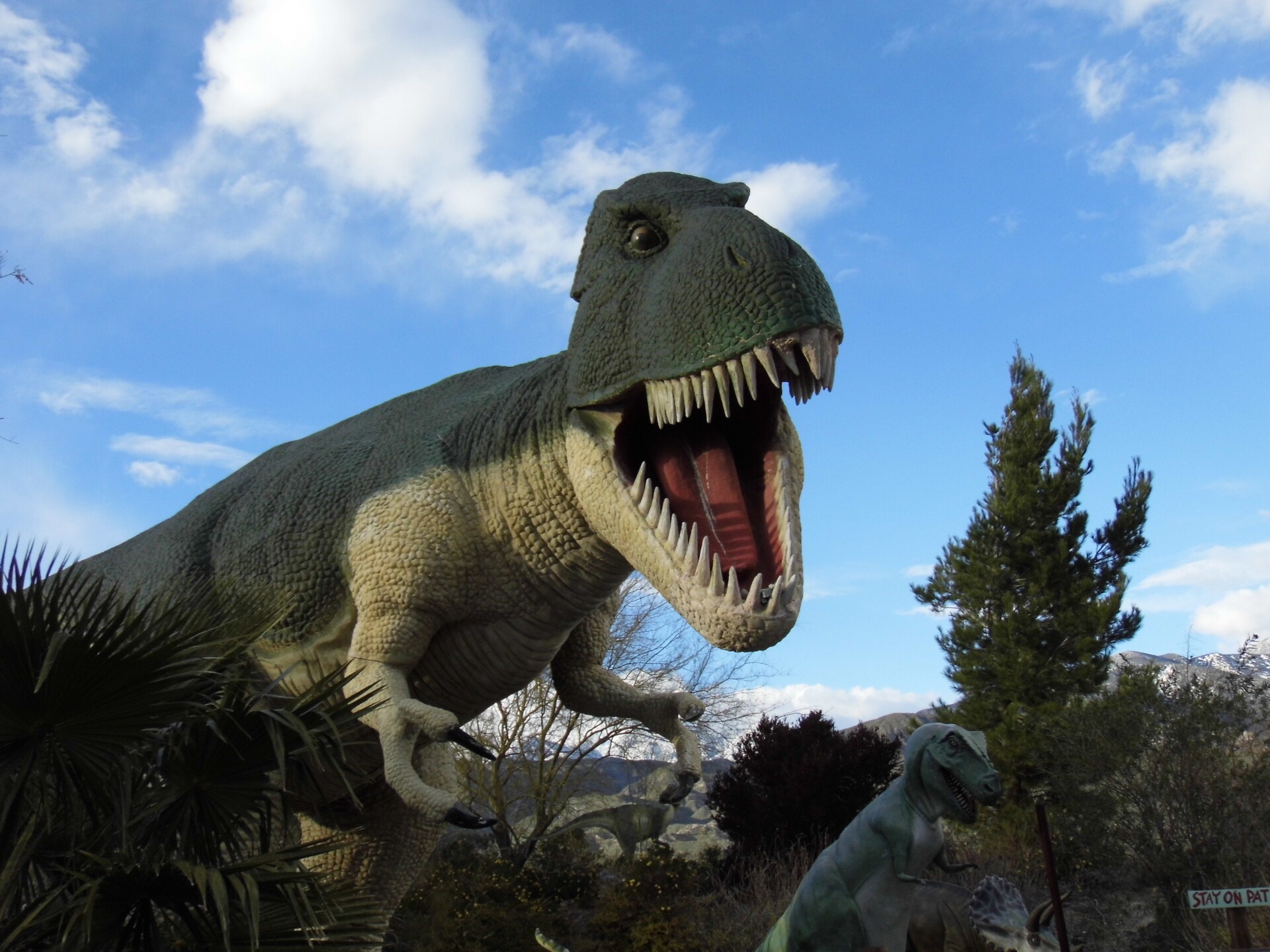
The giant roadside dinosaurs in Cabazon have been clearly visible off the north side of the 10 Freeway for over 30 years — built by theme park artist Claude Bell (of Knott's Berry Farm fame) throughout the 1970s and '80s to attract customers to his diner next door, The Wheel Inn. Unfortunately, The Wheel Inn closed back in 2013 – but the "World's Biggest Dinosaurs" attraction lives on!
Over the last couple of years, these larger-than-life biomorphic buildings have been getting kicked up a notch with seasonal paint jobs. The three-story concrete T. Rex (that's "Mr. Rex" to you) has donned a Santa suit for Christmas, a tuxedo for Valentine's Day, a bunny costume for Easter, and so on; the 150-foot-long Apatosaurus ("Dinney," completed in 1975) has gone Christmas-tree green and Easter-egg-pink (with a red heart emblazoned on its side), both of which are an upgrade from the drab grey and brown tones of the prior decade (and as famously featured in the movie Pee Wee's Big Adventure).
It's not a purist depiction of these extinct creatures, but it sure is fun and plenty weird. For an up-close view, first climb up into Dinney's belly, which doubles as a gift shop, and examine the evolution of man from Homo erectus to the Cro-Magnon, as carved into the walls. Then, head to the dinosaur garden in the back — where you must amble through Bell's recreation of prehistoric life with velociraptors, a ceratosaurus, and more before getting to climb into the mouth of the most infamous carnivorous king of the dinosaurs: Mr. Rex. Bell ceased construction on it in 1986, just two years before his death — never realizing his dream to build a slide down the dino's tail.
Address: 50770 Seminole Dr, Cabazon, CA 92230. Tickets to climb the T. Rex are only available at the door. No pets allowed. Check the website for the most current operating days and hours.
5. Cabot's Pueblo Museum, Desert Hot Springs




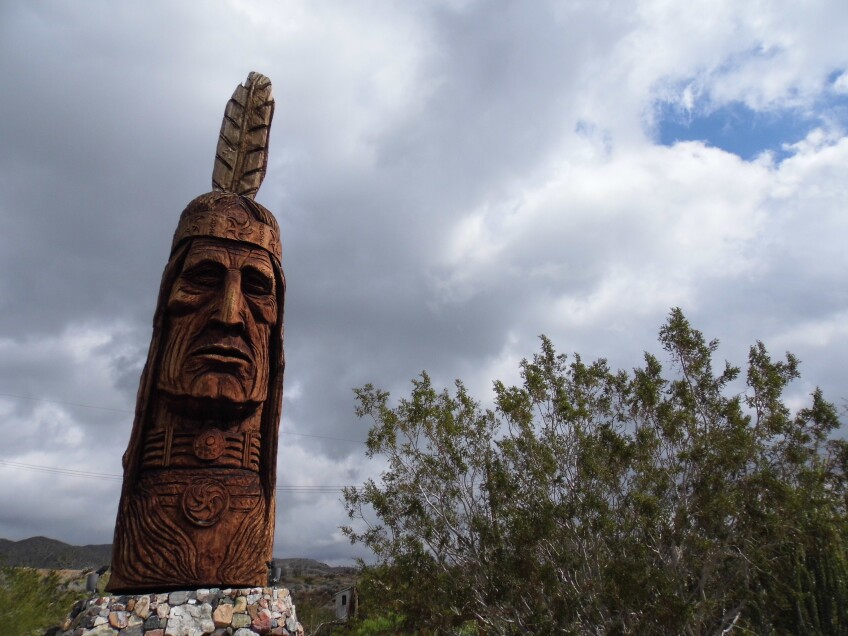

Inspired by the Hopi Tribe, homesteader Cabot Yerxa — an early pioneer of the Coachella Valley — built his own "pueblo" as a tourist attraction and his family home in 1941. But he never really completed it — not even for its grand opening in 1950. In fact, he worked on it for nearly 25 years, until he died in 1965. And now, the nationally-landmarked Cabot's Pueblo Museum is owned by the City of Desert Hot Springs and open to the public.
On a guided tour of the four-story, 5000-square-foot historical structure — which boasts 35 rooms, 150 windows (no two of which are alike) and 65 doors — you'll find many hidden treasures, including building materials of found objects like telephone poles and wagon parts and bits and salvaged pieces from abandoned homesteads in the area. Turns out, Yerxa was the ultimate upcycler!
Yerxa's personal collection on display inside the museum also includes family photos, Native American pottery, and artifacts from his adventure travels in Alaska. Outside, a later addition to the museum campus (circa 1978) is one of Peter Wolf Toth's "Trail of the Whispering Giants," known as "Waokiye" — a 43-foot-tall, 20-ton Native American head carved from a giant sequoia log. If you don't have time for a full hour-long guided tour, you can view it and the rest of the outdoor grounds (no interiors) during museum open hours for a reduced fee.
Address: 67616 E Desert View Avenue, Desert Hot Springs, CA 92240. Check the website for current COVID-19 safety protocols. Private, virtual, and school tour options also available.
6. Volkswagen Spider, Palm Springs

Outside the former location of a VW repair shop and welding shop called Hole in the Wall, there's a sculpture that truly pays tribute to both of these — a full-size, 1970 Volkswagen Beetle that's been welded into a 28-foot-tall black widow spider.
According to the Desert Sun, this eight-legged wonder was created by welder, desert adventurer, and dune buggy racer Bob Miner, who passed away at the age of 74 in 2008.
Although the welding shop is now closed and used as a private residence, you can find a spot to pull over (maybe in the Jack in the Box parking lot) and view this spine-tingling "spider bug" anytime day or night. (Just don't disturb those who live there.)
Address: 6545 N Indian Canyon Dr. Palm Springs, CA 92262
7. Shields Date Garden, Indio



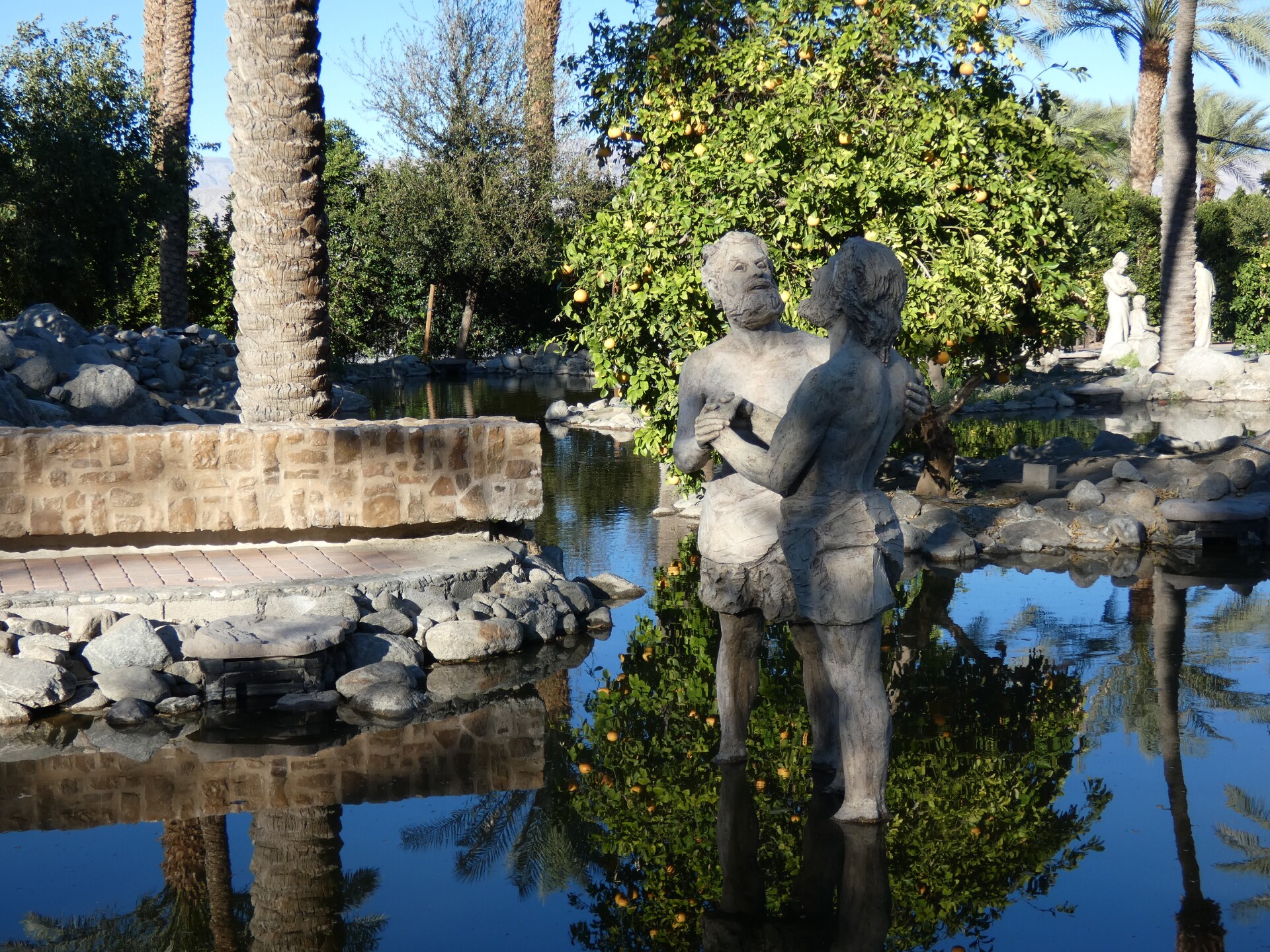


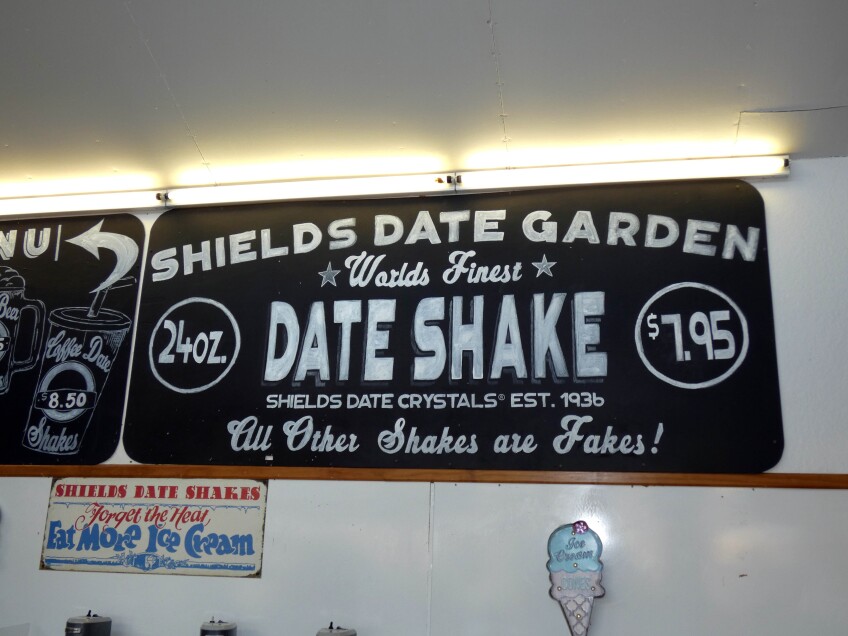

The city of Indio is widely known as "The Date Capital of the Nation." And its biggest attraction — besides the Coachella Valley Music and Arts Festival, Stagecoach Festival, and Date Festival — is Shields Date Garden, a 98-year-old roadside stand that's home to a grove of date palm trees that produce fruits sold in the adjacent store and café. (Of course, you can get a date shake there, too.) Some of those dates were hybridized by Mr. Floyd Shields himself — like the "blonde" and the "brunette," which are still exclusive to the Shields brand.
Today, you can still buy the "date crystals" invented by Mr. Shields in 1936 — still sold in the same type of cans as 86 years ago. These seeded, dehydrated date bits (sometimes also called "date sugar") can be used to recreate any number of Mrs. Bess Shields' recipes, like "Queen Elizabeth cake" and oven-steamed pudding.
But what makes this roadside attraction truly wacky is how two very different worlds collide there. In addition to hosting a free film screening in the titillatingly-named Romance Theatre — "The Romance & Sex Life of the Date," which made its debut in 1951 — it also offers a walk-through garden with 23 religious statues depicting the life of Jesus Christ, relocated from a defunct biblical theme park in Vancouver and installed here in 2013.
Address: 80225 Highway 111, Indio, CA 92201. Free admission, no purchase necessary. Open 7 days a week except Christmas Eve and Christmas Day.
8. The International Banana Museum, Mecca

Located near the North Shore of the Salton Sea — an area that's generally dominated by palm date groves and offerings of date shakes — the entrance to the International Banana Museum is marked by a bright yellow robot banana sculpture by Robolights creator Kenny Irwin. It's been in this location since 2012
Past that and through the door, a nominal fee (waived if you buy something) allows you to "go bananas" as you're surrounded by the world's largest collection devoted to the banana (or, any one fruit, for that matter).
And you'll be in good company with other banana lovers, too, as well as every kind of banana-fana-fo-fana you can imagine — from Chiquita to Dole and every banana split in between.
Of course, there's plenty of opportunity to monkey around at the Banana Museum — but the "top banana" here, of course, is the fruit. There's even the opportunity to taste it — with banana candy vending machines and banana-flavored goods for sale (like banana bread, banana shakes, and frozen bananas).
Address: 98-775 Highway 111, Mecca, CA 92254. Hours may vary. Call 619-840-1429 to confirm.
9. "Sky Art" sculptures of Galleta Meadows, Borrego Springs
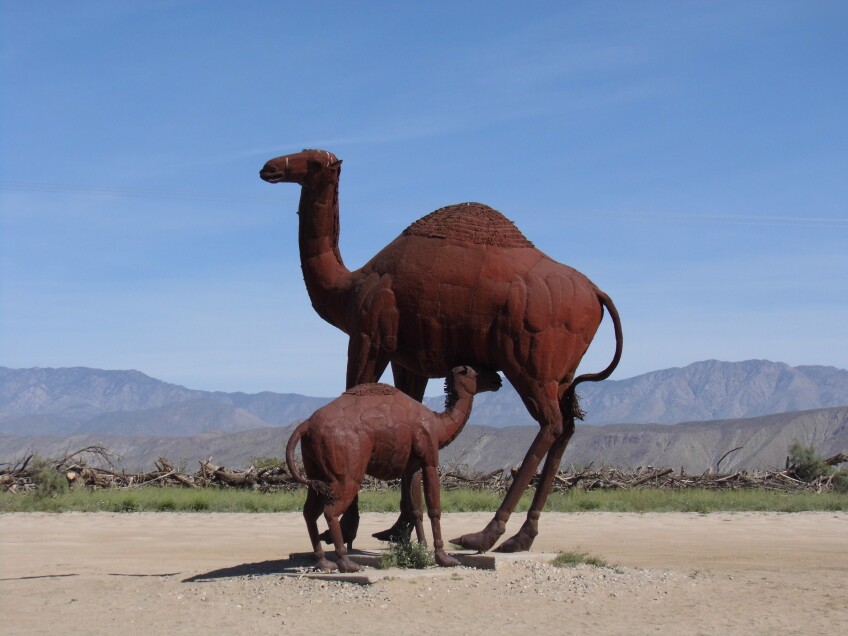

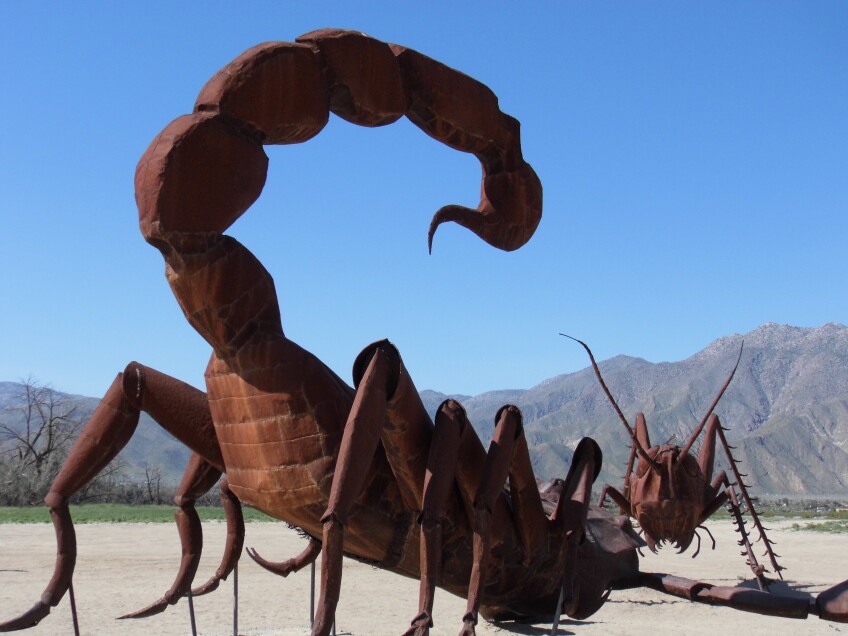


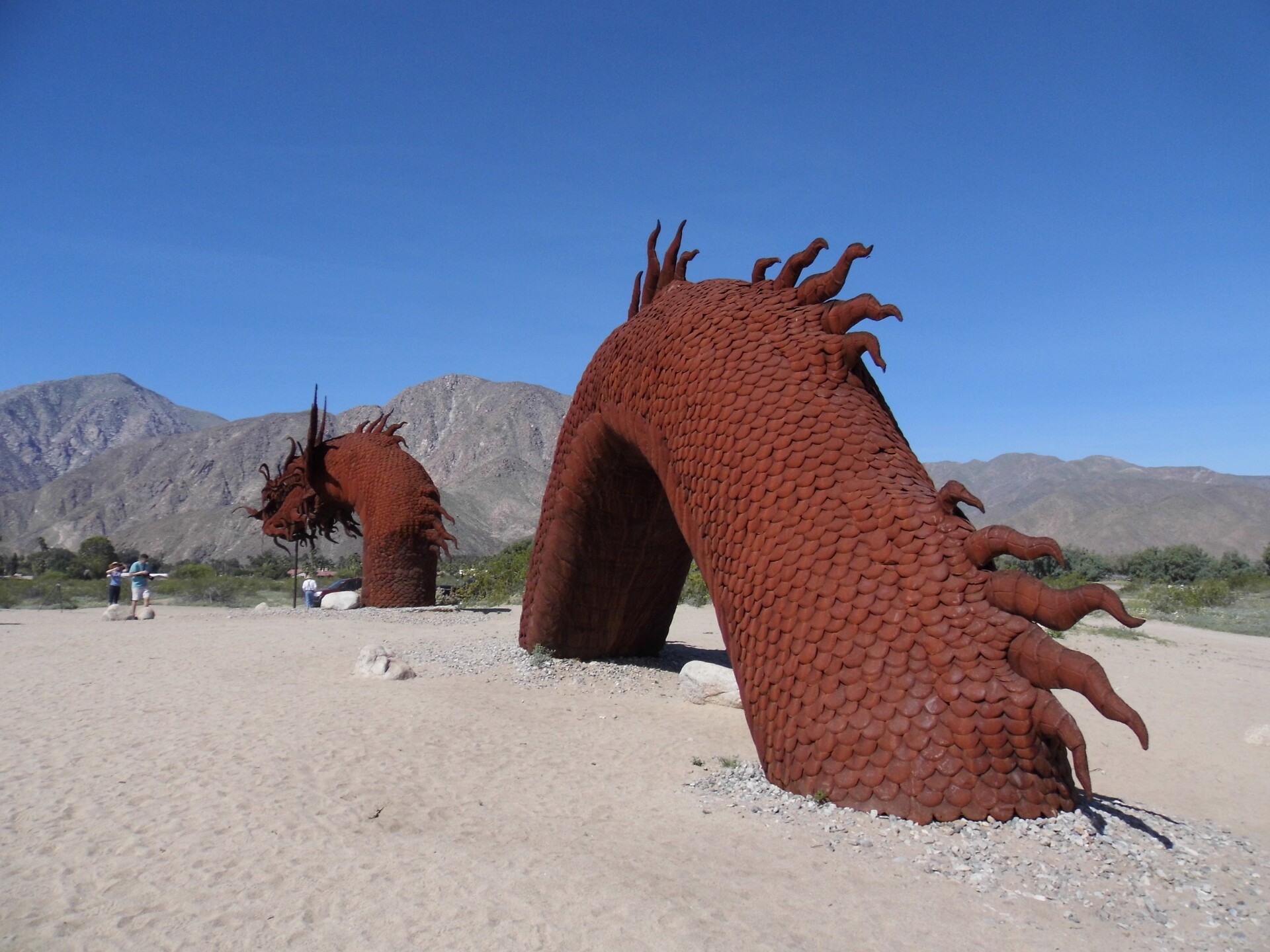
Since they first started appearing in 2008, the rusted metal creature creations of sculptor Ricardo Breceda have become part of the Anza-Borrego desert in and around the town of Borrego Springs. But a closer look at each of these "Sky Art" pieces — and the tableaus that they create — reveals desert scenery that gets curiouser and curiouser.
There's the serpent rising up from some underworld beneath the sand, ready to lash out at this new world that greets it. A scorpion rears its lethal stinger at an approaching grasshopper. An ancient camel nurses its calf. An extinct bird of prey nests while wild horses of a bygone period still roam the dusty terrain. These sheet metal sculptures and more are reportedly based on the traces of prehistoric life that have been discovered in Anza-Borrego — where the longest continuous fossil record in North America can be found. But some of them are just pure fantasy and whimsy.
North of town, you'll find a large cluster of these sculptures off Borrego Springs Road near Henderson Canyon Drive. On the southern side of town, look for them off Borrego Springs Road between Di Giorgio Road and Anzio Drive. To find your way, download the digital map or pick up one of the printed maps available at many local hotels, restaurants, and other businesses.
Free. Getting up close to the art requires some driving on dirt paths where the sand might be deep. Don't forge new paths with your vehicle to visit the art. Watch out for rattlesnakes, and carry plenty of water.








